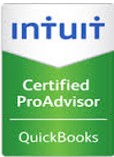2021 COVID Relief Package
The new COVID relief package (part of the Consolidated Appropriations Act, 2021) signed into law on Dec. 27, 2020, included more than $300 billion in aid for small businesses. In mid-March 2021, several components of the act were clarified and expanded.
You're probably wondering, what does this relief package mean for me? The Business Guides team has broken it down for you, keeping in mind the perspective of our small business owner clientele. The most pertinent points are as follows.
ADDITIONAL RESOURCE: Listen to our 1/8/21 Q&A call, in which firm owner Sarah Hadlock, CPA, CFP(R), shares the latest guidance on the new relief package.
Last updated 4/20/21 ~ includes March 2021 rule changes
> PPP expenses deductible
The new law specifies that business expenses paid with forgiven Paycheck Protection Program (PPP) loans are tax-deductible. This supersedes previous IRS guidance that such expenses could not be deducted and brings the policy in line with Congress’s original intent. This change will simplify your year-end bookkeeping and lower your tax bill.
> EIDL advance not taxable income
This is a 180-degree change from the previous law. These $1,000-10,000 advances (based on number of employees) received when you applied for an Economic Injury Disaster Loan (EIDL) program loan will not count as taxable income.
> PPP forgiveness not reduced by EIDL advance
This eliminates the sticky possibility that many PPP borrowers would have had to carry a small loan in the amount of their EIDL advance, even if the rest of their PPP loan was forgiven. If you've already applied for forgiveness with an EIDL advance in the calculation, expect communication from your lender as to how to proceed.
We encourage you to wait a bit before contacting your lender with questions relating to this new law. Everyone needs time to figure out how to apply it.
> New PPP loans for old & new borrowers
Businesses that opted out of a PPP loan in 2020 will be glad to hear there's another chance to apply. There appear to be no significant changes in the application process with qualified lenders, nor the requirement that to be eligible for full loan forgiveness, PPP borrowers must spend no less than 60% of the funds on payroll.
Borrowers that returned all or part of a previous PPP loan may reapply for the maximum amount available to them.
A second PPP loan is available for companies with fewer than 300 employees who suffered a 25% drop in gross revenue in any 2020 quarter compared with the same quarter in 2019 (using the same basis -- cash or accrual -- that you use for the tax forms you will be documenting the drop with). If you were in business for all four quarters of 2019 you are eligible to compare your annual receipts from 2019 to 2020 to demonstrate the 25 percent revenue reduction, providing annual tax return forms as documentation. Applicants also must have used (or will use) the full amount of their first PPP loan. Completing the forgiveness process for the first loan is not a requirement for applying for a second loan.
The maximum loan amount, for most businesses, can still be calculated by multiplying your average monthly payroll by 2.5. But this time you get to pick whether it's your 2019 calendar year payroll or the one-year period before the date the loan is made.
> PPP application dates & form
First and second PPP loan applications will be accepted at most lenders starting on Tuesday, Jan. 19. The application window was legislated to close on March 31, but in late March was extended to May 31, 2021.
Get ready to submit via your lender's online portal by pre-filling the PPP borrower application form, rev. 1/8/21. Be prepared to provide documentation of your payroll expenses, including 941 forms and invoices for health insurance.
> New, more generous PPP loan amounts for Schedule C businesses
In early March 2021, the SBA announced that Schedule C sole proprietors can apply for a PPP loan using their GROSS revenue, not their NET revenue (gross minus expenses).
Unfortunately, this rule change is not retroactive for previously approved loans, but it is available for either first- or second-time PPP borrowers. There are new application forms, revised as of March 3rd, on the SBA website.
For a quick estimate, take line 7 of your 2019 or 2020 Schedule C, divide by 12 and multiply by 2.5 (the number of months of "payroll" a PPP loan covers). If you have no employees, this is the approximate amount you could expect for a PPP loan -- which is easily forgivable for sole proprietors. LEARN MORE.
> PPP loans for new businesses started in 2019 or before 2/15/20
Businesses started during the coronavirus pandemic are still not eligible for PPP loans. However, if you were in business by Feb. 15, 2020, you can compare your gross receipts during the second or third quarter of 2020 (April 1 - June 30) to the first quarter of 2020 (January 1 - March 30) to see if you qualify for the 25%-reduction-in-gross-
Borrowers who were not in business during the first, second, or third quarter of 2019 but were in business during the fourth quarter of 2019 (October 1 - December 31), can compare the first, second, or third quarter of 2020 to the fourth quarter of 2019.
> Simplified application for PPP loans under $150,000
Borrowers who received less than $150,000 in a PPP loan during the first round of funding will now only have to submit a one-page application for forgiveness. Additionally, you won’t be required to submit any reports or records (although you must keep them in your files).
The simplified application was released on Jan. 19 and is called SBA Form 3508S. It will apply to more than 85% percent of PPP loans. Those with loans over $150,000 will still need to provide documentation.
> Employee Retention Credit expanded
The new law allows this valuable payroll tax credit to be used in conjunction with PPP, as long as it’s used for employee wages not paid with PPP funds. Previously this credit was not available to you if you took out a PPP loan, nor was a PPP loan available to you if you had previously taken the credit.
The amount of the credit was originally 50% of qualifying wages paid from March 12, 2020 - January 1, 2021, up to $10,000 of wages per employee in total. The new law increases the credit to 70% of qualified wages each quarter and extends the time frame to Dec. 31, 2021. Lastly it increases the qualifying wages to $10,000 per employee per quarter, rather than in total.
This is an especially valuable credit for businesses with a large number of employees, like restaurants.
> More SBA loan payments & deferments
The SBA will cover three more months of loan payments on existing SBA 7(a) and 504 loans and microloans, including principal, interest, and fees.
In late March 2021, the SBA extended deferment periods for all disaster loans, including the COVID-19 EIDL program, until 2022.
All SBA loans made in calendar year 2020 will have a first payment due date extended from 12 months to 24 months from the date of the note.
All SBA disaster loans made in calendar year 2021 will have a first payment due date extended from 12 months to 18 months from the date of the note.
> Unemployment benefits extended
Workers receiving unemployment benefits can receive a $300 per week supplement until March 14, 2021. The new law also extends the Pandemic Unemployment Assistance (PUA) program, which offers expanded coverage to the self-employed. Significantly, it increases the number of weeks of benefits an individual may claim from 39 to 50. If your benefits have already run out, check your state’s website for further instruction about whether you’ll be required to do anything to receive the extra 11 weeks of aid.
> Industry-specific aid
Shuttered live venues, independent movie theaters, and cultural institutions will have access to $15 billion in dedicated funding. PPP borrowers from the hotel and restaurant industries can get up to 3.5 times their average monthly payroll costs, rather than 2.5 times. Restaurants, bars, and other eateries (including bakeries, breweries, wineries, tap rooms and tasting rooms at which on-site sales to the public comprise at least 33% of gross receipts) will have access to the Restaurant Revitalization Fund relief program, intended to subsidize losses between 2020 and 2019.
> Sources & further reading
Our synopsis was informed by these reputable third-party sources:
- "What Small Business Owners Need To Know About The New Stimulus Package" by Brian Thompson, Forbes.
- "COVID-19 relief bill addresses key PPP issues" by Jeff Drew, Journal of Accountancy.
- "PPP And EIDL Loan Changes After The Coronavirus Response And Relief Supplemental Appropriations Act" by Alan Gassman, Forbes.
- Summary of COVID-10 relief provisions in H.R. 133 from the House Committee on Appropriations (29 pages).
- Full text of H.R. 133 (5,593 pages).
>>> Visit our ORIGINAL Coronavirus FAQ page (not updated since the 2021 COVID relief package was passed, but populated with recordings of our weekly Q&A calls, our special edition e-newsletters, and more than 30 frequently asked questions and answers for small business owners since the start of the COVID pandemic in Spring 2020).







